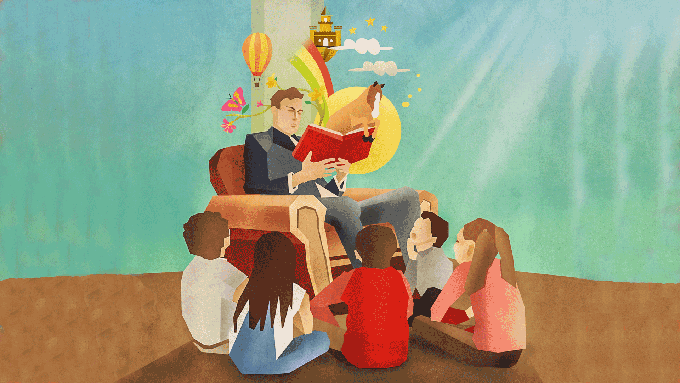
We all have a need to count and to be told, not just children. However, these are the most receptive because their first connection with the world revolves around what they hear and see in order to build their own self.
We do not know exactly when and where the first story was told, although we do know with certainty that the first written epic account, found in Mesopotamia, Gilgamesh , could have been written about 4,000 years ago.
The magic of why stories have come down to us lies in the transmission of ideas that influence our way of thinking. In addition, stories favor conflict resolution and promote values .
The art of telling stories has been an inherent instrument of the human being and, as with the mother tongue, it is acquired through listening. Therefore, telling and listening to stories will help to recreate each one of them spontaneously, to develop vocabulary and improve literacy skills.
The Storytelling is the name that is today known to the art or the art of telling a story or making use of body language dramatized for the public to participate feel of the narrative.
The benefits of storytelling
According to the experts who have studied this technique the most , these would be some of its advantages:
- The stories are motivating and fun , generating in the child a deep interest in continuing to learn and encouraging more autonomous learning.
- Listening to stories becomes a shared social experience because it causes sadness, laughter, anticipation, etc.
- The little ones feel identified with the characters and this will help them to exercise their imagination and improve their ability to resolve conflicts.
- Stories help students understand literature and the ideological messages that accompany it.
After analyzing its many benefits, we ask ourselves what is the primary objective of this technique for the Early Childhood education stage. Well, both on the part of parents and teachers is to expose children to a wide variety of experiences related to literacy , prior to the reading stage, so that they naturally develop an unconditional love for books and learn in a natural way. natural and playful.
Stories have always been part of the transmission of a culture and the learning of a language because they involve natural repetition and they have a plot and characters that will help the child develop their listening comprehension and expand their vocabulary.
If we apply everything we have just seen to the teaching of English in the Infant stage we conclude that it is a very fun experience, but also complicated for the students, since the key to being effective is that they feel protagonists, but their attention span is limited. For this reason, the effort used by the teacher when putting it into practice will always be essential to achieve maximum effectiveness.
But why are stories an ideal resource for teaching English? One of the problems that teachers usually face when teaching is the lack of an authentic context where the foreign language should be used. However, the stories provide us with a story set in a real context. In turn, the repetition of vocabulary and syntactic structures, as in the case of stories, will favor their pronunciation and their phonological awareness.
How to choose the right titles?
The innumerable offer of children’s literature titles, together with the lack of time, both on the part of parents and teachers, to choose the appropriate stories, sometimes makes it a more playful than practical resource.
When dealing with early ages, the story should quickly generate interest in the child over a purely pragmatic objective, hence, as Andrew Wright states , we have to take into account some of these criteria to choose a good story:
- It must be liked by the teacher to transmit it successfully.
- It must offer exemplary experiences, values or attitudes.
- It must have an adequate length and help them develop their oral skills, among others.
Recommended genres and titles
Next, we present different genres and children’s titles that will be adapted to a specific theme or skill for the Infant stage.
- The predictable books or predictable books are made up of simple phrases that are repeated to learn vocabulary and sounds. We highlight, among other titles: Goodnight Moon where you can work on the names of children or objects and I Went Walking , to learn the color next to the name of the animal.
- Another genre that we find are concept books , very useful for integrating non-linguistic books through the foreign language in subjects such as Social Science , Natural Science , Arts , etc. We propose the book The Day The Crayons Quit to work with colors and the importance of painting freely.
- Finally, playbooks are an interactive genre whose purpose is for children to make their own decisions. We highlight the book Press Here , where the little one will immerse himself in history, becoming a multisensory experience.
Therefore, stories are an ideal resource for learning English in the Early Childhood education stage, easily adaptable to different methodologies and responding very well to the current bilingual context that is increasing.
In order to facilitate teaching, we recommend our manual titled Storytelling: The reading of picture books in the teaching of the English language to put into practice different skills, concepts and subjects . It is a book for the joint teaching of two different linguistic and cultural systems applied to the stages of Early Childhood and Primary Education and that is supported by working with books from the various disciplines (Mathematics, Sciences, Reading, etc.).
Because telling stories is always something magical. Even when they are told in a language other than ours.
Author Bio: Mercedes Perez is Academic Coordinator of bilingual degrees at UNIR – International University of La Rioja
